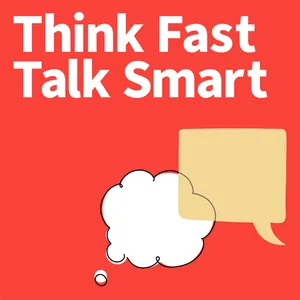175. Mastering Toasts and Tributes: Making Your Words Count
Think Fast Talk Smart: Communication Techniques
Crafting impactful toasts for every occasion.
"Almost reflexively, most of us focus in the moment on how others are perceiving us, yet these situations aren't about us at all." Matt Abrahams, host of Think Fast, Talk Smart, shares an excerpt from his book, Think Faster, Talk Smarter: How to Speak Successfully When You're Put on the Spot, on the art of delivering effective toasts and tributes. With a focus on public speaking in celebratory contexts, he offers a structured approach to crafting meaningful remarks.
Matt introduces the WHAT structure—a four-part formula designed to guide speakers through the process. This method helps ensure that the focus remains on the honorees, transforming speeches into gifts for the audience. He further shares tips for refining remarks, including the importance of brevity and the need to prepare for emotional moments. Matt advises, "Be brief and to the point. Long toasts, tributes, or introductions are usually bad ones." He also highlights the significance of setting others up for success, ensuring a smooth flow for subsequent speakers.
With insights from his book and practical examples, Matt equips listeners with the tools to deliver impactful toasts and tributes, making these moments memorable for all involved.
Audio excerpt courtesy of Simon & Schuster Audio from THINK FASTER, TALK SMARTER by Matt Abrahams, read by the author. Copyright 2023 by Matthew Abrahams LLC. Used with permission of Simon & Schuster, Inc.
Episode Reference Links:
Think Faster, Talk Smarter: How to Speak Successfully When You're Put on the Spot
Connect:
Premium Signup >>>> Think Fast Talk Smart Premium
Email Questions & Feedback >>> hello@fastersmarter.io
Episode Transcripts >>> Think Fast Talk Smart Website
Newsletter Signup + English Language Learning >>> FasterSmarter.io
Think Fast Talk Smart >>> LinkedIn, Instagram, YouTube
Matt Abrahams >>> LinkedIn
Chapters:
(00:00) - Introduction
(01:52) - Key Insight: Toasts, Tributes, and Introductions
(03:23) - Why it Matters
(04:13) - Craft Your Content
(05:24) - Step One: Why Are We Here?
(06:08) - Step Two: How Are You Connected?
(06:59) - Step Three: Anecdotes or Learnings
(08:07) - Step Four: Thank
(08:49) - Refine Your Remarks
(09:16) - Tip One: Be Brief and to the Point
(10:06) - Tip Two: Prepare to be Emotional
(11:58) - Tip Three: Shine the Spotlight Away From You
(12:28) - Tip Four: Make Your Anecdotes Accessible and Appropriate
(12:58) - Tip Five: Strive for Unity
(14:21) - Tip Six: Set Others Up for Success
(15:14) - Conclusion
********
Become a Faster Smarter Supporter by joining TFTS Premium.








